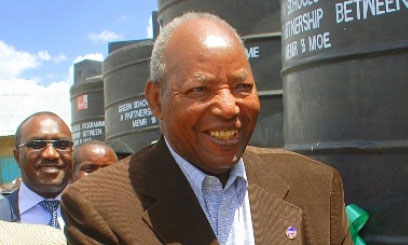
Were you got in the mess of Matatu crackdown on Monday morning? Did you join the walking nation?Michuki rules have come back and have messed up with the normal operations of many Kenyans.
Did you find getting to your work place easy on Monday morning? Do you know where all these rules began from? Well, Fourteen years after the success of the famous ‘Michuki Rules’ in 2004, implementation has become so lax and accidents so rampant that the country is hitting the reset button.
The laws were introduced by the no-nonsense Transport minister John Michuki, hence the moniker ‘Michuki Rules’. Enforcement was both brutal and reprieving, bringing order to the public transport sector for the first time in Kenya’s history.
The radical regulations drastically reduced road accidents by 74 per cent nationally. Fatal road crashes involving urban public service vehicles fell by a whopping 94 per cent in just three months.
But things fell apart after Michuki left the Transport ministry. The wake-up call after a series of accidents was the Fort Ternan bus crash on October 10, which killed 56 on the Kisumu–Muhoroni Highway.

“We are good at drafting good policies and laws, but all of them are turned into cash cows,” says Simon Kimutai, chairman of the Matatu Owners Association.
“That is why Michuki laws have failed. We will have a crackdown today, then after a few days, we will go back to zero because of corruption.”
Before the Michuki Rules came into being, the public transport sector was largely controlled by criminal gangs and run like a jungle scheme.
When the government moved to assert its authority, the cartels used organised criminal gangs to fight back, prompting the government to form special police lock-up teams to eliminate the gangs. Many members of the gangs were killed.
Traffic police had teamed up with Transport ministry officials in implementing the laws. PSV owners and operators, as well as passengers, had to comply with a raft of requirements to be on road, which reduced accidents and enhanced safety and comfort on roads.

Michuki had ordered all public service vehicles to install seat belts, have a yellow line and carry only up to their capacity, with the capacity of each category determined by the law.
Before then, matatu and bus crews determined the number of passengers to carry and the routes to use.
The rules required the PSVs to have safety belts, speed limiters and a yellow line. Passengers were required to fasten their safety belts while traveling.
Thousands of unroadworthy vehicles and their crooked operators countrywide were eliminated from the roads during the crackdown, putting an end to the chaos in the industry.
But this is no longer the case, as the disorder eradicated by Michuki crept back into the public transport system shortly after he was moved to the Internal Security ministry.

Everything went back to normal, and the families and government have paid the price, with massive sums spent on treatment and rehabilitation of accident victims.
Most passengers and motorists only have nostalgic memories of the road sanity achieved through the punitive rules. Today, only a few PSV operators are still compliant with the Michuki Rules, after enforcement slackened.
Now Interior CS Fred Matiang’i and his Transport counterpart James Macharia are embarking on enforcing the same rules today.

Whether Matiang’i will succeed where his predecessors have failed or not remains to be seen. But Kimutai is not holding his breath. Will they succeed or the implementation will collapse again?